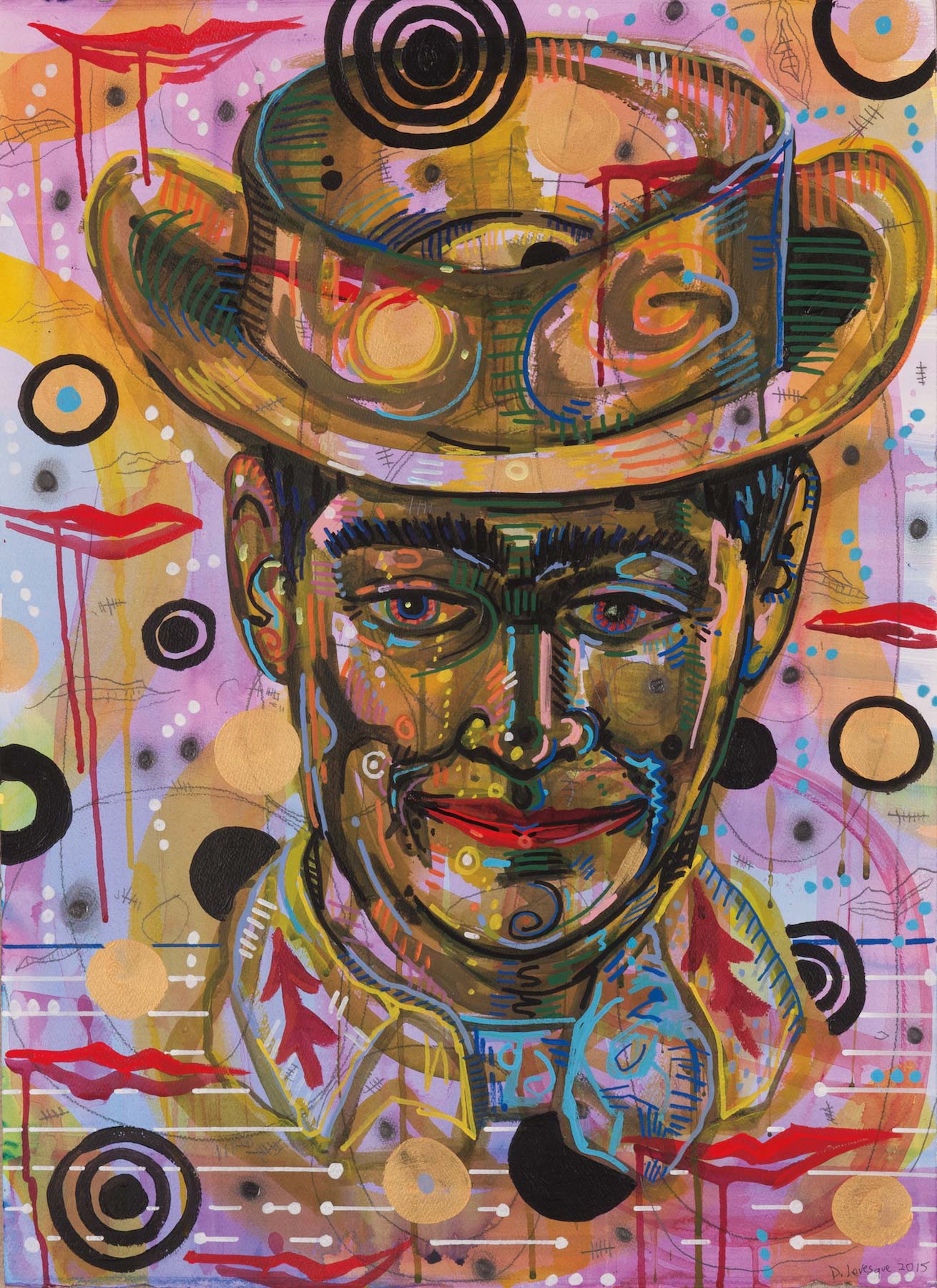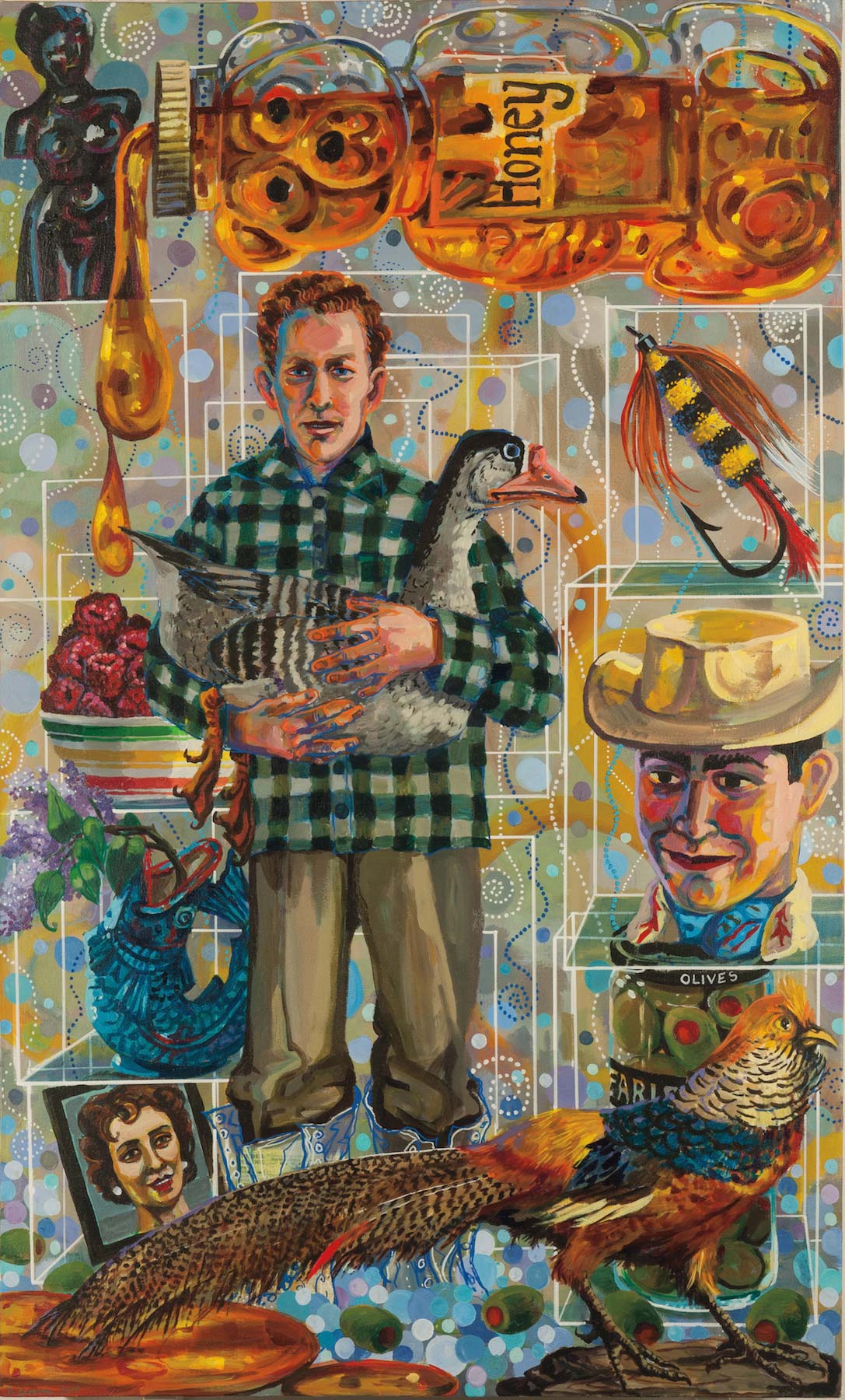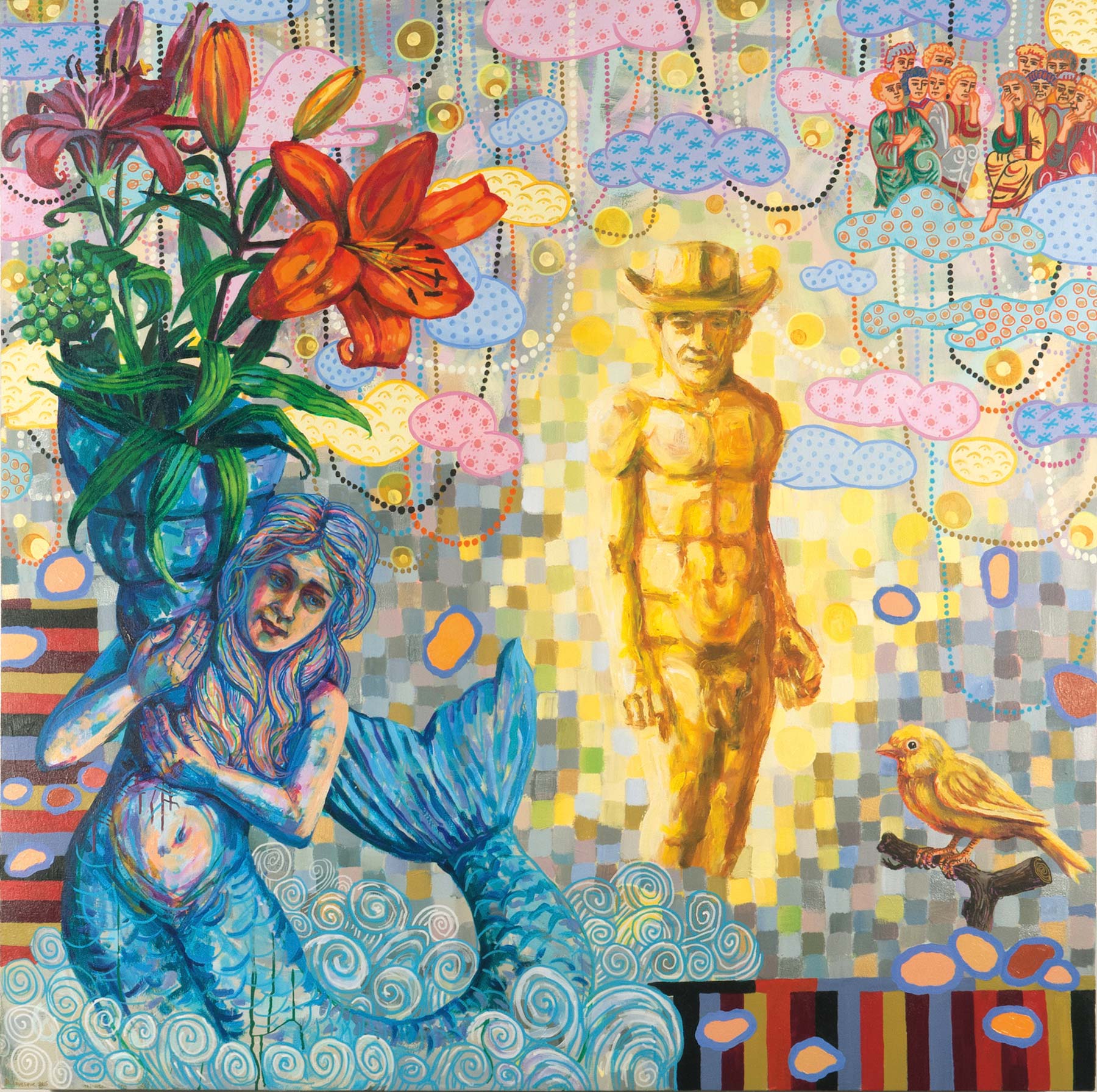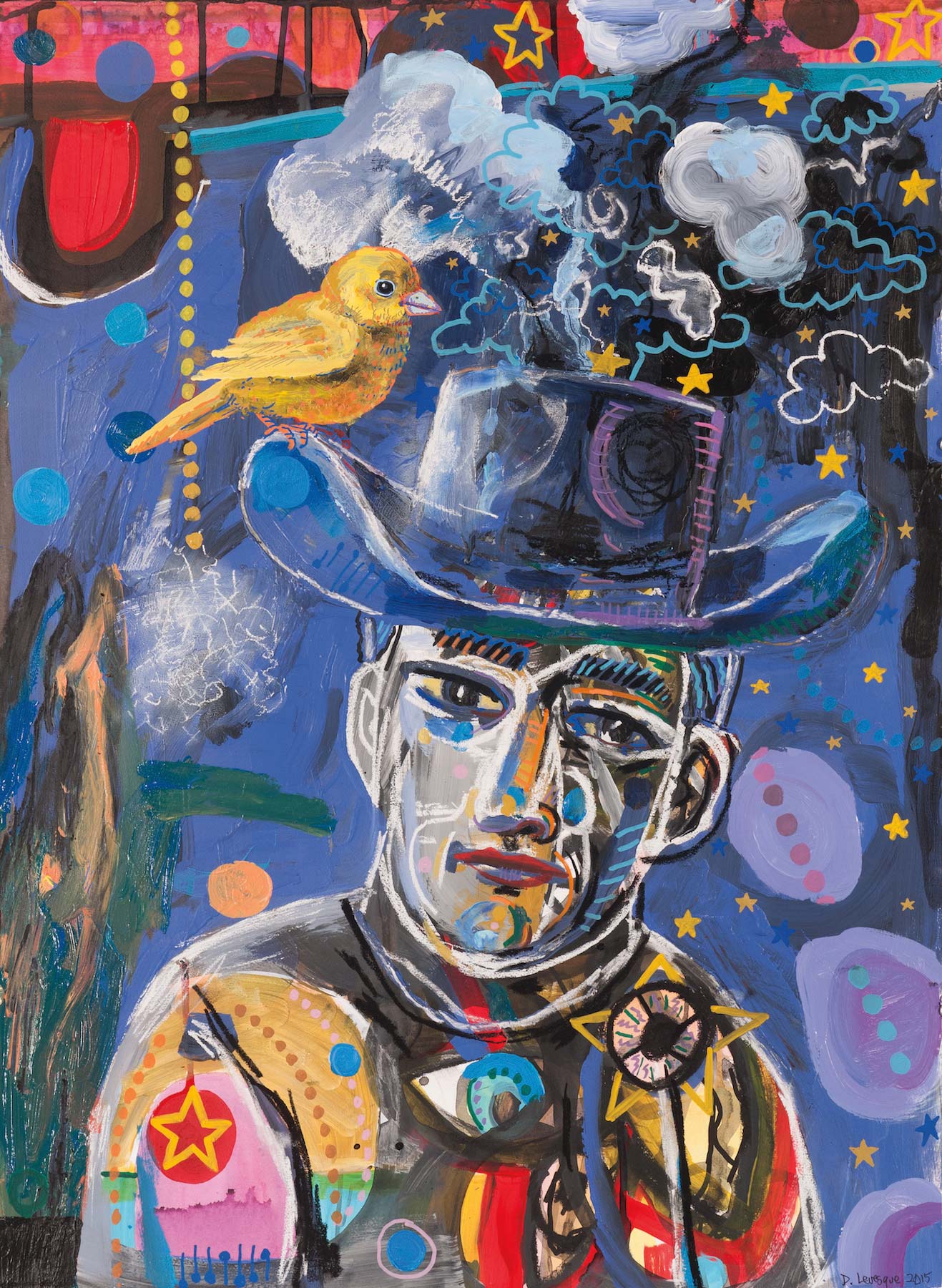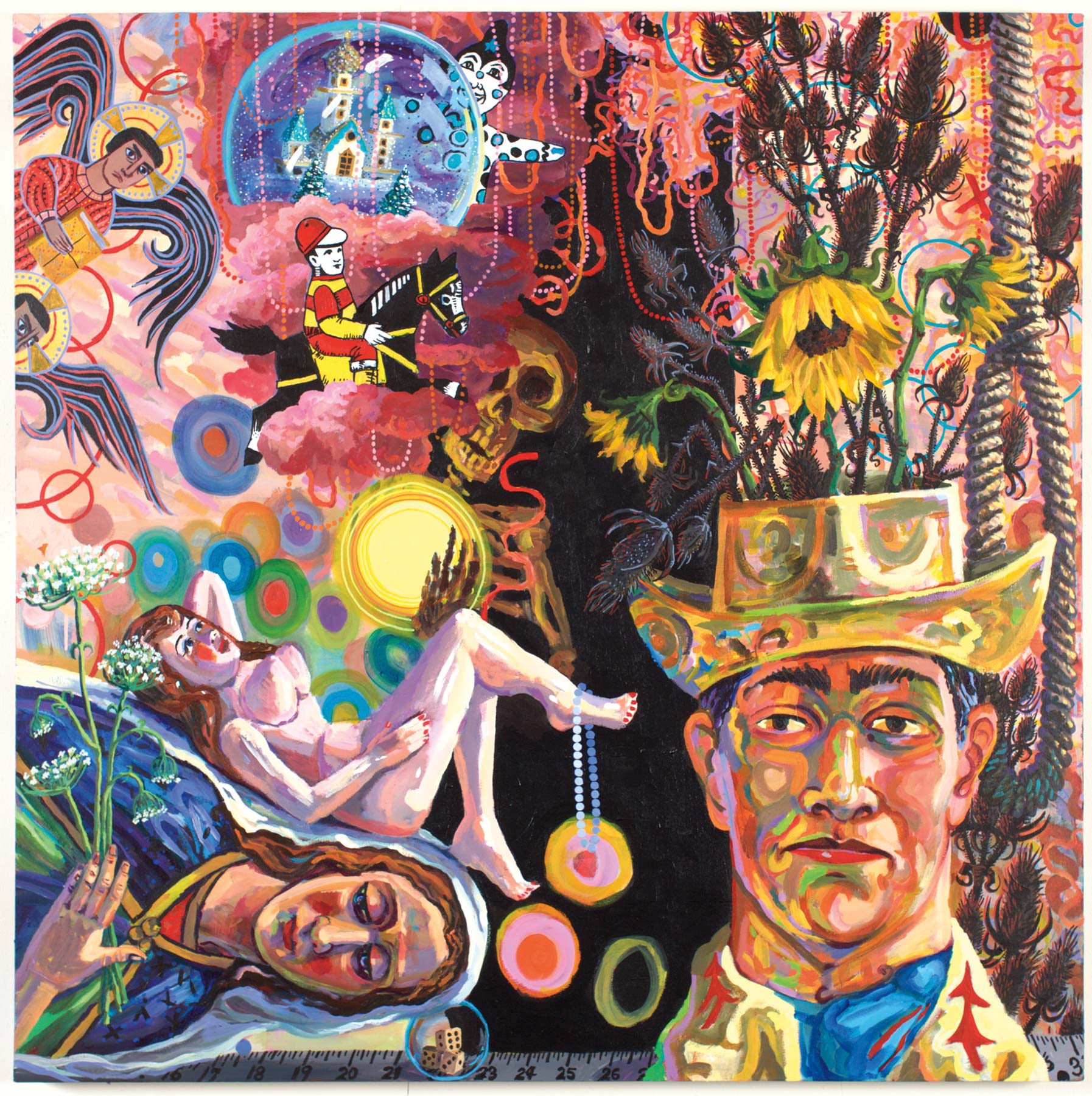
Diane Levesque, Kenosha
2014–15 RAM Artist Fellowship Award Recipient
Diane Levesque earned her BA at State University of New York (SUNY) at Plattsburgh and her MFA in Painting at the University of Chicago. After graduating, she established a studio in Chicago and exhibited at Artemisia, Hokin Kauffman Gallery, NAME Gallery, Struve Gallery, The Art Institute of Chicago, and The Chicago Cultural Center. After moving to Kenosha, Levesque continued to exhibit her work at numerous locations, including the James Watrous Gallery, the Madison Museum of Contemporary Art, Rockford Art Museum, and RAM’s Wustum Museum of Fine Arts.
She has received several grants for her work including an Illinois Arts Council Grant (1987), the Gradiva Award from the National Association for the Advancement of Psychoanalysis in recognition of the psychologically based imagery in her work (1999), and a Wisconsin Arts Board Fellowship Grant (2000). At Carthage College, Levesque is an Assistant Professor of Art and is currently also serving as Director of the H.F. Johnson Gallery of Art.
Artist Statement
As far as stories go, I have always felt a connection to inanimate objects. Seeming to possess both magical and provocative powers, objects stir up an insatiable and repetitive desire to possess. As a child I watched my father, who practiced the strange art of taxidermy, transform dead animals into the facsimile of the living creatures they had once
been. Consequently, the narrative structure in my paintings has evolved through many stages. The objects I depict function as screens for psychological projection. The selection of each object follows the art of memory in which random things trigger associations to arise in the viewer’s mind.
The RAM Artist Fellowship exhibition features part of a body of work titled The Lonely Man Adventures. It begins with a portrait of my father—who passed away in 2013—and explores his identity beyond the archetype of the “father.” One of the objects in this painting is a plastic cup of Roy Rogers, whom my father greatly admired. While working on this painting I became fixated on the Roy Rogers figure as a symbol of “everyman” which I reconfigured into “the lonely man.” The Lonely Man Adventures evolved further into a larger questioning of our mortality, the need for self-awareness, and redemption in the presence of beauty.
Diane Levesque, Kenosha
2014–15 RAM Artist Fellowship Award Recipient
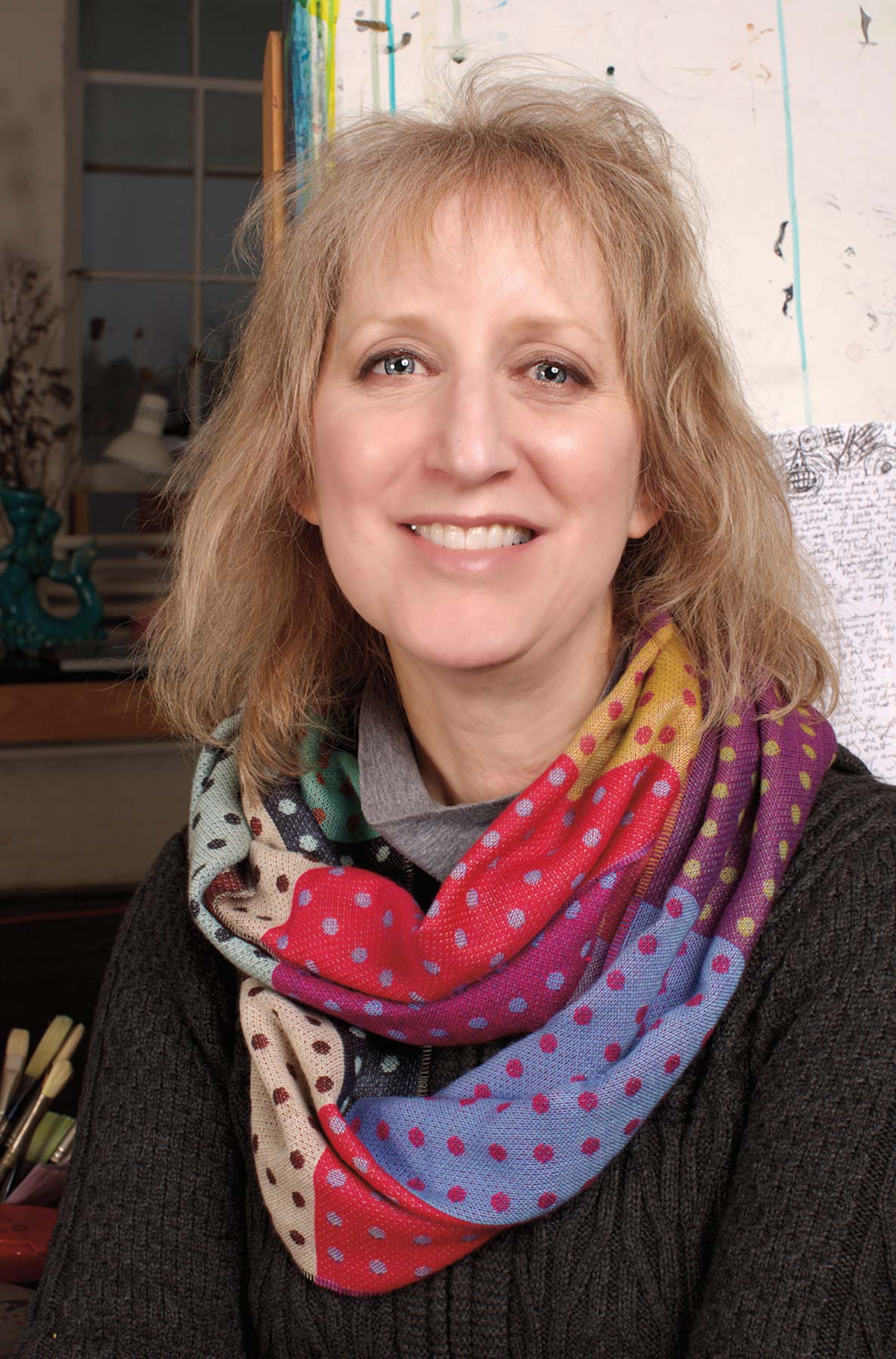
Diane Levesque earned her BA at State University of New York (SUNY) at Plattsburgh and her MFA in Painting at the University of Chicago. After graduating, she established a studio in Chicago and exhibited at Artemisia, Hokin Kauffman Gallery, NAME Gallery, Struve Gallery, The Art Institute of Chicago, and The Chicago Cultural Center. After moving to Kenosha, Levesque continued to exhibit her work at numerous locations, including the James Watrous Gallery, the Madison Museum of Contemporary Art, Rockford Art Museum, and RAM’s Wustum Museum of Fine Arts.
She has received several grants for her work including an Illinois Arts Council Grant (1987), the Gradiva Award from the National Association for the Advancement of Psychoanalysis in recognition of the psychologically based imagery in her work (1999), and a Wisconsin Arts Board Fellowship Grant (2000). At Carthage College, Levesque is an Assistant Professor of Art and is currently also serving as Director of the H.F. Johnson Gallery of Art.
Artist Statement
As far as stories go, I have always felt a connection to inanimate objects. Seeming to possess both magical and provocative powers, objects stir up an insatiable and repetitive desire to possess. As a child I watched my father, who practiced the strange art of taxidermy, transform dead animals into the facsimile of the living creatures they had once
been. Consequently, the narrative structure in my paintings has evolved through many stages. The objects I depict function as screens for psychological projection. The selection of each object follows the art of memory in which random things trigger associations to arise in the viewer’s mind.
The RAM Artist Fellowship exhibition features part of a body of work titled The Lonely Man Adventures. It begins with a portrait of my father—who passed away in 2013—and explores his identity beyond the archetype of the “father.” One of the objects in this painting is a plastic cup of Roy Rogers, whom my father greatly admired. While working on this painting I became fixated on the Roy Rogers figure as a symbol of “everyman” which I reconfigured into “the lonely man.” The Lonely Man Adventures evolved further into a larger questioning of our mortality, the need for self-awareness, and redemption in the presence of beauty.
Interview with the Artist, January 2015
Would you please describe your work—what materials you use; what subject matters you explore?
I use acrylic paint on various surfaces, such as canvas, wood panels, and paper, often combining collage materials as a mid-layer.
As for subject matter, I often incorporate multiple narratives in my work that hint at personal, philosophical, literary, and political references. The desire to transform memories and personal observations into compelling images leads me to combine various objects and figures in metaphorical tableaux. In many cases, the objects appear in relationship to a main figure that is the subject of the painting. Scale is distorted to suit a symbolic order, much like the hierarchy of religious figures as seen in sixteenth-century Northern Renaissance paintings. I manipulate spatial elements in unexpected ways to make the world of my paintings seem a bit unstable and liminal. This allows hidden meanings between the objects and figures to intertwine.
The substance of the objects is important to interpretation. Glass objects are seductive because of their transparency, which distorts what lies behind the objects allowing a momentary rupture from normality. Glass implies fragility and danger, calling to mind the adage about “glass houses.” Measuring devices such as rulers, compasses, hourglasses, clocks, measuring tapes, and measuring cups bring a reassuring domesticity, yet they also serve to remind us that we might not be quite measuring up to our potential, that we have taken more than our fair share, or that the years are passing us by.
The combination of reappearing motifs within my work is a source of joy to me. One possible journey to understanding and meaning is the juncture where word, idea, and image play out in the daily dramas of life; a place where the real and the imaginary are signposts to guide us in our travels through life informing us what has meaning and what doesn’t. If my work appears labyrinthine or bewildering it is because the images are meant to act as a mirror of those aspects of our lives that are unwilling to yield important secrets, or let us view things that are too horrifying and too wonderful to gaze fully upon. In my work I hope to uncover meaning in various forms by sharing my fascinations with things unusual, beautiful, strange, dark, light, foreign, familiar, wise, and foolish. I seek a reconciliation of opposites and the potential of finding beauty as part of the outcome. There is satisfaction that comes from understanding life’s complexities that enlarges a way of living, seeing, and feeling by which we gain knowledge and insight into ourselves and the world we live in.
How often are you in your studio? Do you work outside of your studio much or at all?
My studio schedule depends on my teaching schedule, which changes every semester. I try to maintain a discipline of going to my studio three days a week when classes are in session and five days a week during breaks and in the summer.
In my Racine studio, there are absolutely no distractions so I’m painting or drawing nearly the entire time. I may stop to write in my journal and read a bit. I also manage to work in my home studio on the weekends on smaller projects or practice my work in polymer.
It seems that I am always carrying my work around with me in my mind, so I’m often thinking about a painting while I’m driving about, shopping, or cooking dinner. Like my father, who was a taxidermist, I find that I’m always on the lookout for a telling moment or a tantalizing object. I also find teaching and observing my students to be quite inspiring for my own practice.
What inspires you most these days? But also what do you go to bed thinking about most nights?
Inspiration always occurs when a combination of events, people, objects, and the book(s) I’m reading synchronize into an image. Many times there is a news event that triggers the association to a person and things, as in my recent series titled The Plague Years. I was re-reading Albert Camus’s novel The Plague, and painting a portrait of a man I had known a few years ago. While I was working on the painting, The New York Times featured the news of the Ebola outbreak in West Africa. As I continued on the next three images in the series, the Ebola outbreak became an epidemic so the images I created reflected both the fear and reality of those events.
I read a lot and the diversity of my interests has an immediate effect in my work. The author of something I am reading may appear as a character in a painting, or in as part of an ongoing series, such as The Existentialists.
At night, I am always reading books that connect to my current work. And of course, there is the dream world, the deepest source of imagery I know.
Why the RAM Artist Fellowship? Since we are midway through the process, can you assess how you are feeling at this point? Are you where you thought you would be? Have your plans changed since the fellowship year started?
RAM is one of my favorite museums to discover the surprising power of art. The 2009 exhibition, Bigger, Better, More: the Art of Viola Frey, changed my life, as did Terra Nova: Polymer Art at the Crossroads in 2012. These, and many other, exhibitions at RAM have profoundly affected my work as an artist. The RAM Artist Fellowship is a great gift to the community of artists in this region that will help to foster important and significant works to come.
At this midway point, I am experiencing a great sense of freedom alternating with flashes of panic. The fellowship allowed me to obtain a large studio in Racine enabling me to create large canvases, something I have not been able to do for many years. While this has given me a new expressive freedom, I’m concerned that the gamble won’t work. This is not new in my experience. We all have our moments of exuberance and doubt. I would be suspicious if I felt 100% confident in what I was doing regardless. But overall, I’m confident with the progress I’ve made.
My plans have not drastically changed. I knew I wanted to create three large paintings with smaller pieces to accompanying them. The theme of The Lonely Man arose from a painting I had started just after applying for the RAM Artist Fellowship. What did surprise me was the deep resonance of the archetypal meanings behind the symbol of the lonely man figure.
Sample of Work
Click/tap an image for more information
Stay in Touch
The Racine Art Museum and RAM’s Wustum Museum work together to serve as a community resource, with spaces for discovery, creation, and connection. Keep up to date on everything happening at both museum campuses—and beyond—by subscribing to our email newsletter:


